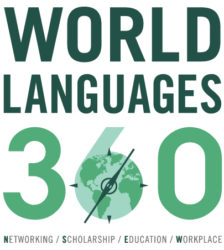We are pleased to announce the projects that have been funded through our new AI Grants as well as our ongoing collaboration with Extempore. The AI grants drew interest beyond what we anticipated, and we were sadly unable to fund all of the viable proposals. Were resources not an issue, this list would have included upwards of 25 entries! We are humbled by the interest our grant programs received, and we truly appreciate the time and effort that the applicants put into crafting their proposals. Hopefully, you will be able to read about them in published articles and hear about them at conference presentations and other professional events in the coming year!
AI Grants
| Project Title | Excerpt from the Proposal |
| ReaL2Chat: Engineering GenAI to Empower Recently Immigrated English Learners with Meaningful and Engaging Language Practice for Higher Education and Career Readiness | English language proficiency and literacy are major barriers for many recent immigrants, especially refugees and asylum seekers, in achieving their post-secondary education goals, career goals, and improving social mobility. Additional financial barriers often prevent such learners from being able to enroll in language classes to develop the level of literacy skills required for admission to institutions of higher education. To help address such barriers facing L2 English learners with limited resources living in the US, ReaL2Chat is designed to engage learners in meaningful communicative tasks designed to support their English development and help prepare them for academic and career success. In addition, the conversational tasks are designed to positively impact learners’ adjustment to their new community through authentic language practice, improving learners’ social mobility. While other currently available digital tools offer language practice with a GenAI agent, our tool is carefully catered for immigrant English learners who are pursuing admission into universities. |
| LinguaLens: AI-Powered Recognition, Reflection, and Real- Time Practice for Learning Chinese | This project is an Android-based AR app currently in the early alpha stage…It enhances beginner-level Chinese language learning through AI-powered cultural immersion and self-reflection. Learners use the app to identify unfamiliar vocabulary and cultural objects via a custom TensorFlow model, receiving contextualized information such as pronunciation, definitions, pinyin, and cultural background — all tied to the curriculum of my introductory Chinese course…This project has the potential to significantly benefit the broader community of world languages educators and learners by offering an innovative, replicable model for integrating AI into culturally responsive language instruction. While our initial focus is on Chinese, the pedagogical framework and technical infrastructure can be adapted for a variety of languages — especially those with limited instructional resources or less commonly taught language (LCTL) status. |
| AI-Supported Flipped Classrooms: A Pathway to Autonomy and Lifelong Language Learning | I will begin designing a ChatGPT-Aided Flipped Learning Model for my Japanese class, utilizing the 5E Learning Model: 1) Engagement, 2) Exploration, 3) Explanation, 4) Elaboration, and 5) Evaluation during the summer of 2025. Although my ultimate goal is to equip students with the skills and abilities to design and manage their own learning, I recognize that they need appropriate guidance and support…Based on trials in my Japanese classes, I have observed several affordances and limitations in the use of AI tools. On the positive side, students become familiar with the diverse functions of AI tools and receive personalized, instant feedback on grammar, vocabulary, content, and sentence structure. They also learn to tailor their use of AI based on individual learning goals, effectively using these tools as a language coach – for example, for writing support, text-to-speech, and quiz creation. However, there are notable limitations as well…AI literacy is essential in today’s society. As educators, we must actively provide students with opportunities to utilize AI tools within our specific contexts, such as language and cultural learning. |
| Interactive Learning Modules on Language Learning & Technology | Our work is inspired by the call for teacher training, and teacher and student digital literacy. Teachers continue to emphasize the need to incorporate AI into teaching practices in order to help develop their own and to support students’ digital literacy skills (Minnillo et al. 2024). Scholars have suggested that AI competencies (or AI literacy) are essential for students to actively participate in modern workplaces (Byrd et al., 2023) and training should include a fundamental knowledge of how AI-based systems work (Godwin-Jones, 2022). Approaches to supporting students in these endeavors include survey and reflection (Merschel & Munné, 202) and Guided use of Machine Translation (Ryu et al., 2022). Additionally, efforts such as the University of California, Berkeley Berkeley Language Center to design and create instructor resources around the use of AI, such as activity templates and instructional modules, is an example of similar resources to help ease the burden on instructors and share knowledge within and across disciplines. As language instructors and learners ourselves, we continually experience first-hand the need for practical guidance on AI classroom integration. Our own experiences confirm that providing structured approaches to AI implementation benefits both educators and students alike. |
| Synapse PathFinder: AI-Agentic Proficiency-Based Curriculum for Personalized Learning | The project, Synapse PathFinder, aims to improve the Chinese program…by using AI to create personalized learning experiences. It will build a database of existing teaching and learning materials organized by themes, proficiency levels, and student interests. An AI agent will match these materials with each student’s language skills and goals, updating content in real time. This system will help students learn more effectively by providing tailored lessons and immediate feedback while giving faculty tools to manage classes and materials efficiently. The goal is to increase student engagement, improve learning outcomes, and make the program more efficient. To develop and implement the project, I plan to follow seven phases over about 12 months. First, I will assess needs and gather materials, then build the core AI functions like profile analysis, resource matching, and learning path generation. Next, I will integrate machine learning and natural language processing to make the system adaptive. A student app will be created for easy interaction with the AI. After testing and refining the system with pilot users, the full program will launch in spring 2026, with training provided for both students and instructors. Throughout, I will track progress and adjust the system to ensure it meets project goals. |
| AI-Powered Personalized Learning for Multimodalities | My goal for this project is to personalize the learning experience for Latin Foundations A students, accommodating diverse learning styles, needs, and AI literacy levels, using Generative AI, and to evaluate the impact of this personalization on student motivation, engagement, and learning outcomes. I plan to use Generative AI to create customized exercises tailored to different learning styles (visual, auditory, kinesthetic) and proficiency levels. For instance, AI could generate exercises with images or diagrams for visual learners. I will use Generative AI to recommend additional resources (e.g., videos, articles, interactive websites) based on each student’s progress and learning preferences, ensuring access to relevant and engaging materials.Most importantly, provide guidance and instruction to students on how to effectively and ethically use AI tools for language learning, fostering responsible AI usage. |
| AI-Powered Oralynx: Evaluating the Feasibility of AI-Administered and Scored OPI Interviews in High-Stakes Language Assessment | The AI Oralynx project investigates the feasibility of using a voice-based AI chatbot, powered by a large language model (LLM), to conduct Oral Proficiency Interviews (OPIs) in Russian as a second language. Drawing on recent advances in AI-driven language learning tools (Yang et al., 2024; Meier, 2024; Šipka, 2024), the project moves beyond informal practice applications to explore the capacity of AI to perform formal oral language assessment aligned with the ACTFL Proficiency Guidelines (2024). While AI tools now offer structured feedback in written L2 contexts (Barrot, 2023; Kwon et al., 2023), the use of AI for oral proficiency evaluation remains underdeveloped. This pilot study aims to determine whether an LLM can be adapted—via fine-tuning or custom modeling—to recognize proficiency levels, simulate natural conversational flow, and assign valid ratings comparable to those of certified human testers. |
| Adventurous Language Learning: A Cost-Conscious Exploration of AI and VR for Immersive Language Education | Adventurous Language Learning explores how AI and Virtual Reality (VR) can be used to create immersive, culturally rich learning experiences for language learners—particularly those in less commonly taught languages. Grounded in self-directed learning and cultural curiosity (Vall & Araya, 2023; Adiguzel et al., 2023), the project leverages recent advancements in AI and VR to build a cost-conscious, scalable model for educators. Inspired by established CALL research and real-world implementations (e.g., Belda-Medina & Calvo-Ferrer, 2022; Mageira et al., 2022), this initiative goes beyond initial exploration. I have already developed a custom GPT, started interviewing key VR tool providers, such as Access VR and Virtual Speech, and reviewed success cases like Matthew Steinhauer’s Japanese VR project (MWALLT 2025). The project will expand this work into a comparative evaluation of tools such as GPTs, Gems, Heygen, ThingLink, Immerse, and Unity Learn. These tools will be tested across instructional design quality, AI responsiveness, language support, cost, and ease of integration…Using an AI-powered web builder (e.g., Gamma), I will develop a public-facing site to host: 1. Tool comparisons 2. Sample lesson templates 3. VR room demos with embedded AI 4. Educator resources and evaluation guides. |
World Languages 360 – Extempore Grants
| Project Title | Excerpt from the Proposal |
| Certifying Success: Linking Global Seals of Biliteracy to Student Outcomes | The World Languages 360-Extempore grant will give additional students the opportunity to earn a Global Seal at the end of the Fall 2025 semester while also gaining access to Extempore’s resources. Our project will allow student participants to use Extempore and potentially earn the Global Seal as part of their academic coursework and at no cost to them. The outcomes of our project for learners are: Improve recruitment, retention, and career readiness; incentivize heritage language learners to pursue formal study of the language and professionalize and certify their language skills; encourage non-native speakers to continue their study of one or more languages beyond the novice level; Enhance the employability of our graduates and their eligibility for higher starting salaries in a range of careers thanks to their documented multilingualism through the Global Seal. |
| Adequately Assessing Student Proficiency to Enhance Individualized Learning | Our project aims to enhance the accuracy and effectiveness of language placement tests for Vietnamese students through the use of Extempore. By revising our current test and incorporating Extempore’s very specific timing capabilities, we will implement more granular student placements. This will not only improve the assessment of individual language skills but also empower students with personalized learning pathways. Research indicates that engagement with authentic texts, which we plan to integrate, significantly boosts language acquisition and student motivation. |
| Using Extempore to Demystify and Promote Writing in an Elementary French Language Classroom | The main objective of the project is to demystify writing by breaking down the process into achievable tasks. After becoming familiar with the use of Extempore for speaking and listening, Extempore will be used to offer a variety of writing techniques and activities such as sentence formation from a group of scrambled words, filling in the blanks with the appropriate word from a word bank, then we move to putting sentences together to construct a full paragraph based on the theme the class is working on. These activities will be completed both individually and in groups by implementing the three modes of communication (interpersonal, interpretive, and presentational) all in an immersion environment where the target language is used as the medium of communication. The activities will be spread throughout the semester. They will be an integral part of the syllabus. The writing activities using Extempore will be implemented in the classroom once a week throughout the semester. |
Also, don’t forget to read about our pilot grant collaboration with Pangea Chat!

